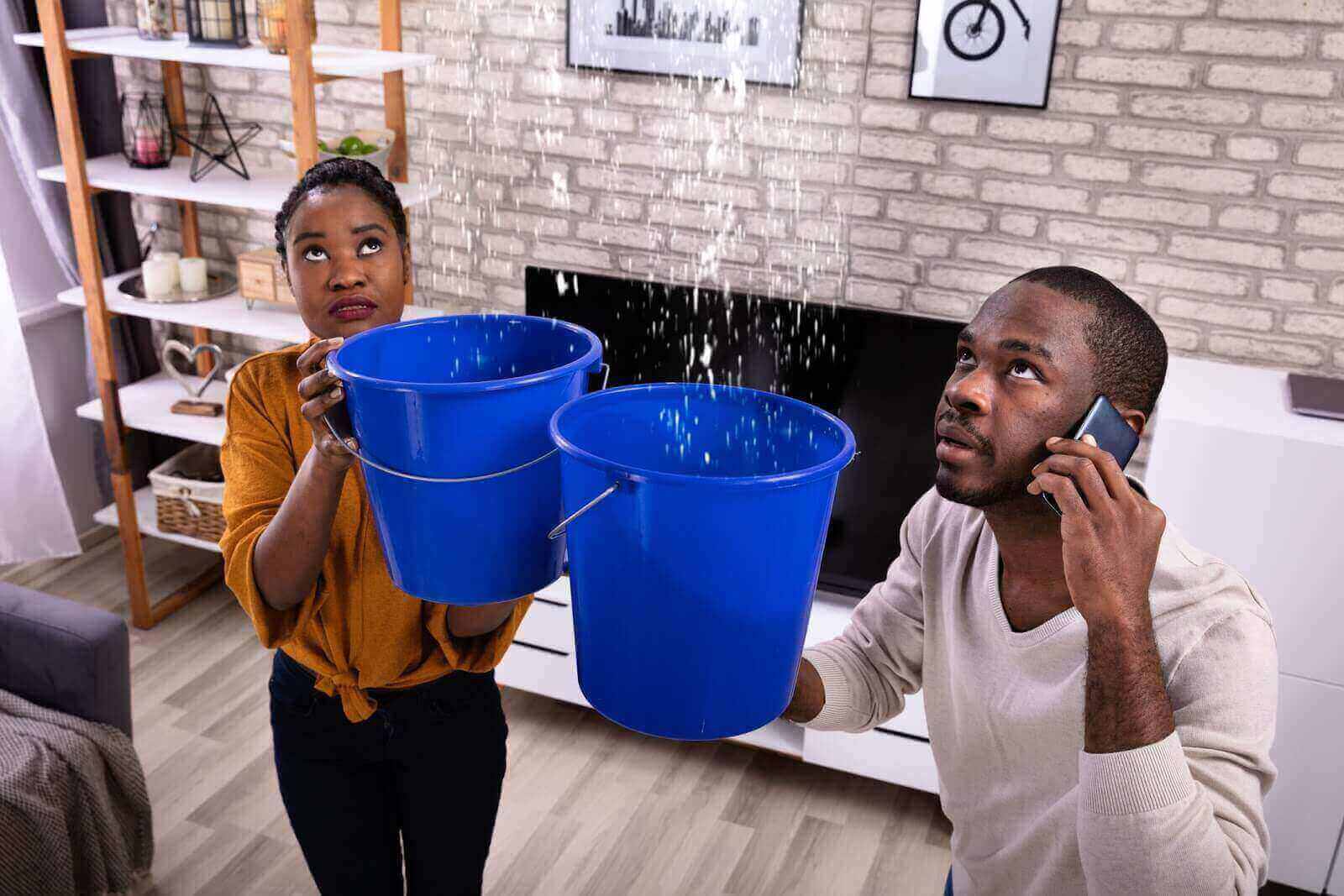Whether you’ve just noticed a discolored spot on your ceiling or have had a leak for months, a water damaged ceiling is something no one wants to see. Even so, it must be dealt with promptly to avoid further damage.
Even if you know there’s a problem, you might not know how to fix a water damaged ceiling in the first place. This is where the Bull Matrix Restoration team can help. But first, you should know what causes water damage and the signs of it in your home.
What Causes Water Damage in Your Ceiling?
Knowing what causes water damage in your ceiling can help you keep an eye on problematic areas. That way you’ll be able to solve small leaks before they become a body of water in your rafters.
Burst Pipes
Burst pipes are most common in places that experience extremely cold temperatures. The cold weather causes water in the pipes to freeze, which creates a buildup of pressure. In really bad cases, the ice completely blocks any water movement. The pressure then bursts a hole through the pipe or separates the pipe at its joint.
Severe spikes in water pressure, water hammering (pipes moving around and hitting the inside of your walls when the water is shut off), and natural corrosion are also common reasons your pipes can burst.
Plumbing Leaks
Less extreme than a burst pipe are plumbing leaks, though these can still cause major issues. Leaky pipes are often caused by pipe corrosion, shifts in the foundation of the house that adjust your water lines, and extreme temperature changes. If the water damaged ceiling is directly below your bathroom, then you probably have a plumbing leak.
Leaking Appliances
Dishwashers, washing machines, and some refrigerators have water supply and drain lines. When these lines leak, you’ll often see the water damage on the ground before it gets to the ceiling below. But sometimes, the leak is behind the appliance, and you won’t see the damage until it starts dripping onto the floor below.
Roof Leaks
Damaged roof shingles let water into your attic space, which will show up as stains on the top ceiling of your home. While intense rain in the spring and summertime can damage your roof, intense freezing temperatures in the winter, along with the ice dams in your gutters, can allow water to sit on your roof and sink into the attic.
How to Spot Water Damage in Your Ceiling
Not only will these signs of a water damaged ceiling help you recognize when you have a leak, but they can also help you determine the severity of the issue.
- Watermarks (Brown Stains): Perhaps the most commonly recognized sign of water damage is the rusty brown stain that appears on ceilings. This can be a sign of a current or previous leak.
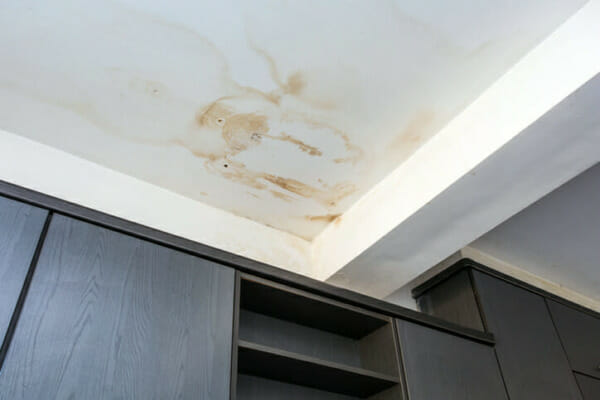
- Water Accumulation: You may find pools of standing water in your home. If you have a puddle under an appliance or in your attic, you’ll more than likely be dealing with a water damaged ceiling below.
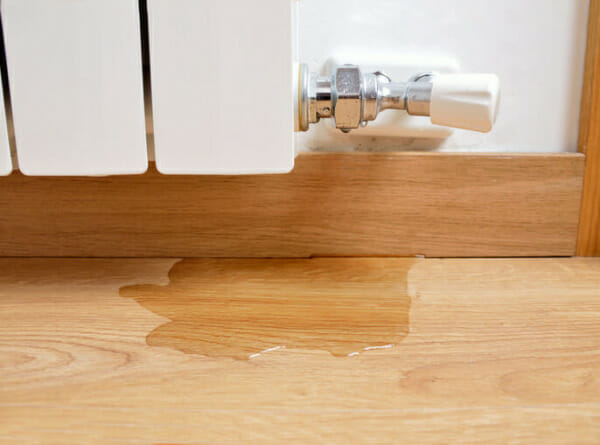
- Mold in Corners, Ceilings, and Walls: In just 48 hours, a mix of moisture in the ceiling and humidity in the air can cause mold to grow. This fungus can pose serious health problems for those who live in the home, so these cases should be addressed immediately.
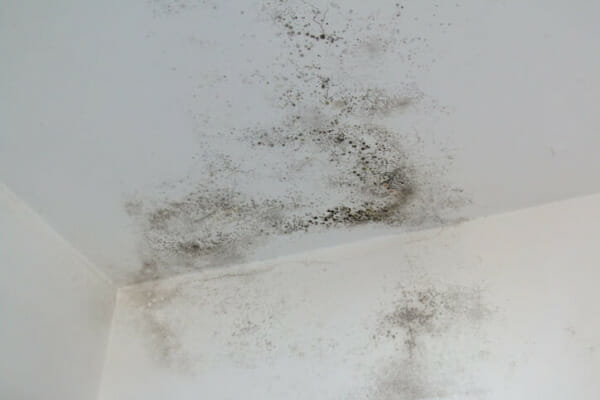
- Swollen Walls, Ceilings, and Door Casings: When the paint balloons away from the ceiling or wall, there’s a collection of water and moisture in the wood. Bowed door frames can also be a sign of water damage.
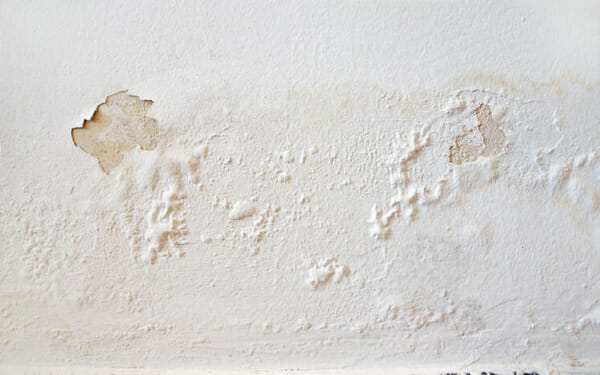
- Wallpaper and Baseboards Separating from Walls: Decorative features on your walls, like wallpaper and baseboards, can separate from the drywall due to built-up moisture from a leak.
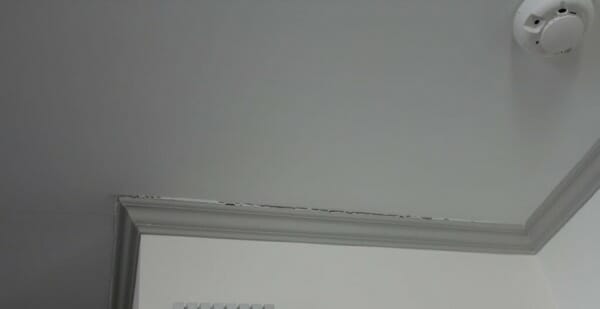
- Sweating Walls: Before a water leak causes mold or a water damage stain, it will look wet. This moisture often pools in one area and then drips down your walls.
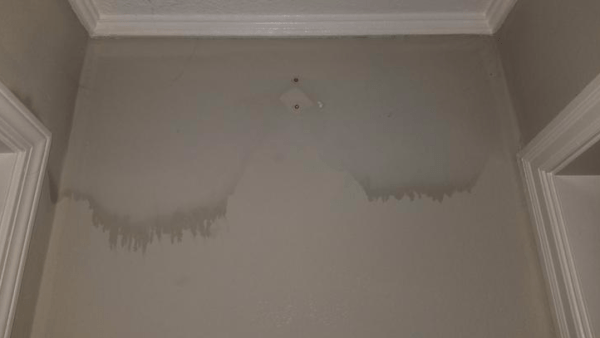
- Odor: Even if the mold or water damage isn’t visible, it will come with a detectable, musty odor. This can be a good first indicator there’s a water problem, giving you time to fix it before it becomes a serious issue.

Steps to Fix Your Water Damaged Ceiling
Now that you know how to tell when you have a water damaged ceiling, what happens next? You can either attempt to fix it yourself or call the experts.
Call Bull Matrix Restoration. We know how to repair your water damaged ceiling plaster and will make the affected area look, smell, and feel like new again. Our restoration services always go through this six-step process:
- Inspect the property to determine the severity of the water damage and plan a course of action.
- Remove the water with industrial-strength pumps and vacuums to get rid of all the excess moisture in your home.
- Dry the space with air-movers and dehumidifiers to ensure all moisture trapped in wood and drywall is accounted for.
- Clean and sanitize after the space is dried to ensure no mold or bacterial growth occurs.
- Restore the affected area by making it look better than it did before and discuss with the homeowner what appliances or fixtures should be replaced.
It’s critical that you reach out to us as soon as you notice any signs of a water damaged ceiling so we can fix a small problem from getting worse. Contact Bull Matrix Restoration today and let us know how we can serve you.

